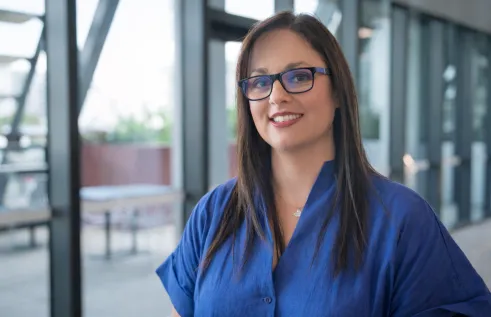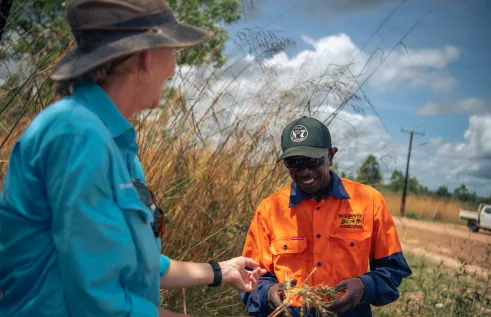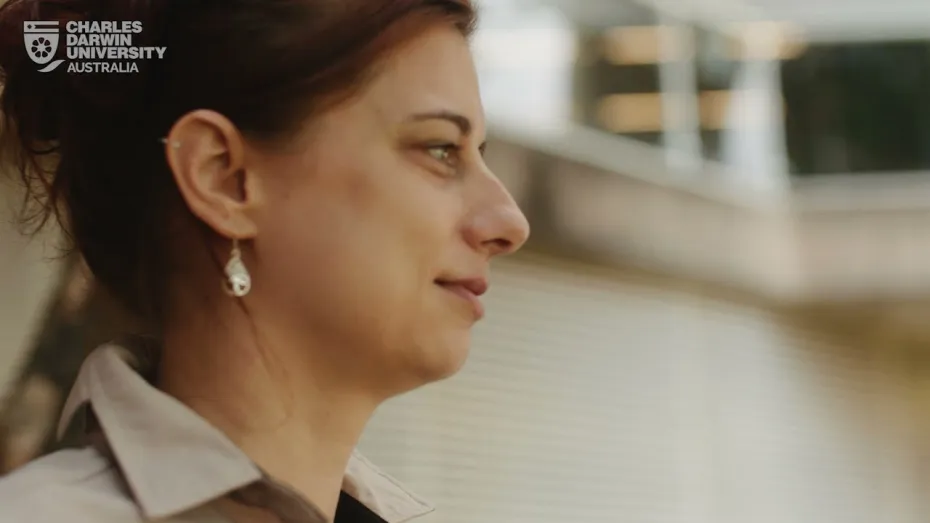News
Researcher uses 3D modelling to measure biomass of trees for carbon monitoring
Researcher and PhD student Linda Luck is providing valuable data for carbon monitoring through a scanning technology that generates digital 3D models of trees.
Ms Luck, from the Research Institute for the Environment and Livelihoods (RIEL) at Charles Darwin University (CDU), is investigating how the biomass of savanna trees varies in time and space.
The scanner uses laser beams to produce precise 3D modelling used to calculate the biomass of trees, which can be useful for carbon accounting applications such as prescribed burning to capture and store carbon dioxide or to better understand the global carbon cycle.
“The technology I use is called terrestrial LiDAR, which stands for laser scanning and ranging. It’s essentially using a laser beam to measure the distance to the nearest object, but it does so millions of times for each scan,” Ms Luck said.
“The 3D models give a very detailed look so we can get a better idea of the structure of individual trees. If you’ve never seen the data, you can picture it like a 3D computer game with very detailed renderings – only these ones are based on real trees.”
Ms Luck is originally from Germany and came to study a Bachelor of Environmental Science at CDU in 2013.
Her PhD topic is in investigating the above-ground woody biomass of trees in the Northern Australian savannas.
“My research has already highlighted just how variable tree structure is due to damage from termites, storms and fire.”
“No tree looks the same, that’s why traditional methods struggle. Laser scanning of woody vegetation is an incredibly powerful tool, but it’s still in its developmental phase. I am finding ways to make data processing and analysis more streamlined,” she said.
“Currently, I am investigating how we can use LiDAR to better quantify the above-ground biomass in our trees and monitor change over time.”
Ms Luck has an innate curiosity and passion for trees, so it comes naturally that she chooses to study trees to better understand how they interact with their environment in the Northern Territory.
“Trees are just beautiful. I hope that this technology can be used a lot more in the future,” she said.
According to Ms Luck, the scanning device can be used broadly in many industries.
“It’s used in industries like horticulture, archaeology, architecture and mining. It is used to determine the dimensions of objects. From that, I can calculate the volume and based on the density of the wood the biomass and the carbon content.”
“This technology has a lot of potential. Knowing the challenge that the Northern Territory faces in quantifying the amount of carbon in the environment, it can really make a change,” Ms Luck said.
CDU Research Week is running from 14 - 23 August and a series of research projects by CDU scholars will be featured to highlight the University’s research efforts and achievements.
Charles Darwin University is actively seeking Higher Degree by Research students to take part in research projects like this. Scholarships are available. Learn more here.
Related Articles

CDU solidifies presence in South Australia with Associate Vice-Chancellor Adelaide appointment
Charles Darwin University (CDU) is pleased to announce the appointment of Professor Lisa Papatraianou as the new Associate Vice-Chancellor Adelaide.
Read more about CDU solidifies presence in South Australia with Associate Vice-Chancellor Adelaide appointment
CDU alumnus wins national human rights award, pushes for Australia-wide legislation
A Charles Darwin University (CDU) alumnus has received top honours at the Australian Human Rights Commission’s awards gala, using his acceptance speech to push for nationalised human rights legislation.
Read more about CDU alumnus wins national human rights award, pushes for Australia-wide legislation
CDU TAFE First Nations students reach more than 3,300 for the first time
During 2025 First Nations students represented 30 percent of total students at CDU TAFE, a jump of 550 students from 2,747 in 2024 to more than 3,300 in 2025. A first for the TAFE and well surpassing the national average.
Read more about CDU TAFE First Nations students reach more than 3,300 for the first time
